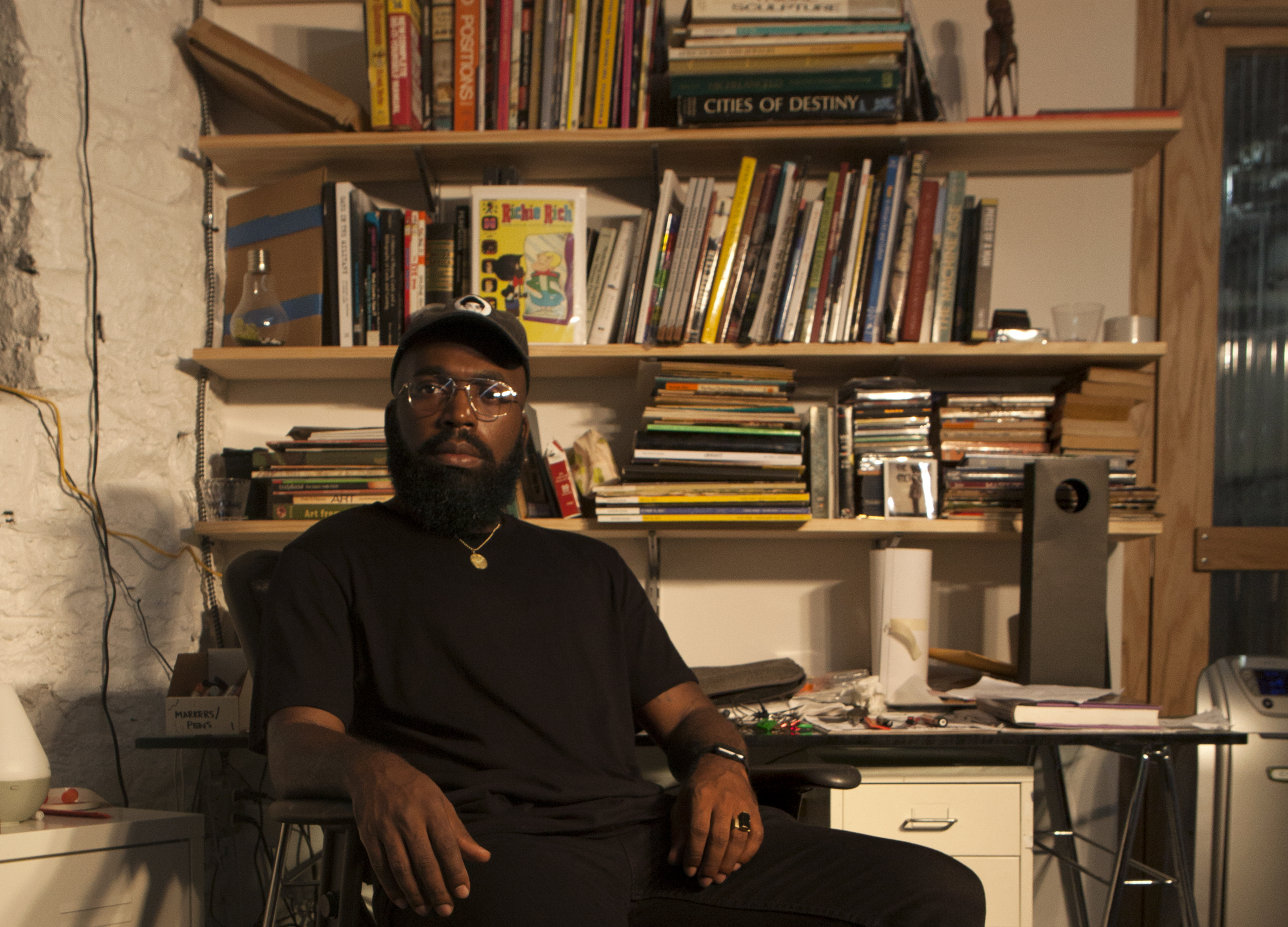Derrick Adams has a lot going on. In September, when we visited him in his studio in Bed-Stuy, Brooklyn, his exhibition “Future People” was on view at the Stony Island Arts Bank in Chicago (it closed September 18, 2017), as was his show, “Patrick Kelly, The Journey,” presented by The Studio Museum in Harlem with the Schomburg Center (on view at Countee Cullen Library through February 23, 2018).
This fall, he curated two shows at Jenkins Johnson Projects in New York: “Hidden in Plain Sight” and “Arjan Zazueta: Beautification.” And he’s one of the participating artists in Prospect.4. His “Figures in the Urban Landscape” at Tilton Gallery in New York opened on Novmeber 8. And this winter, he put together “IMAGINATION LAND: Fantastical Narrative” at the YoungArts Gallery.
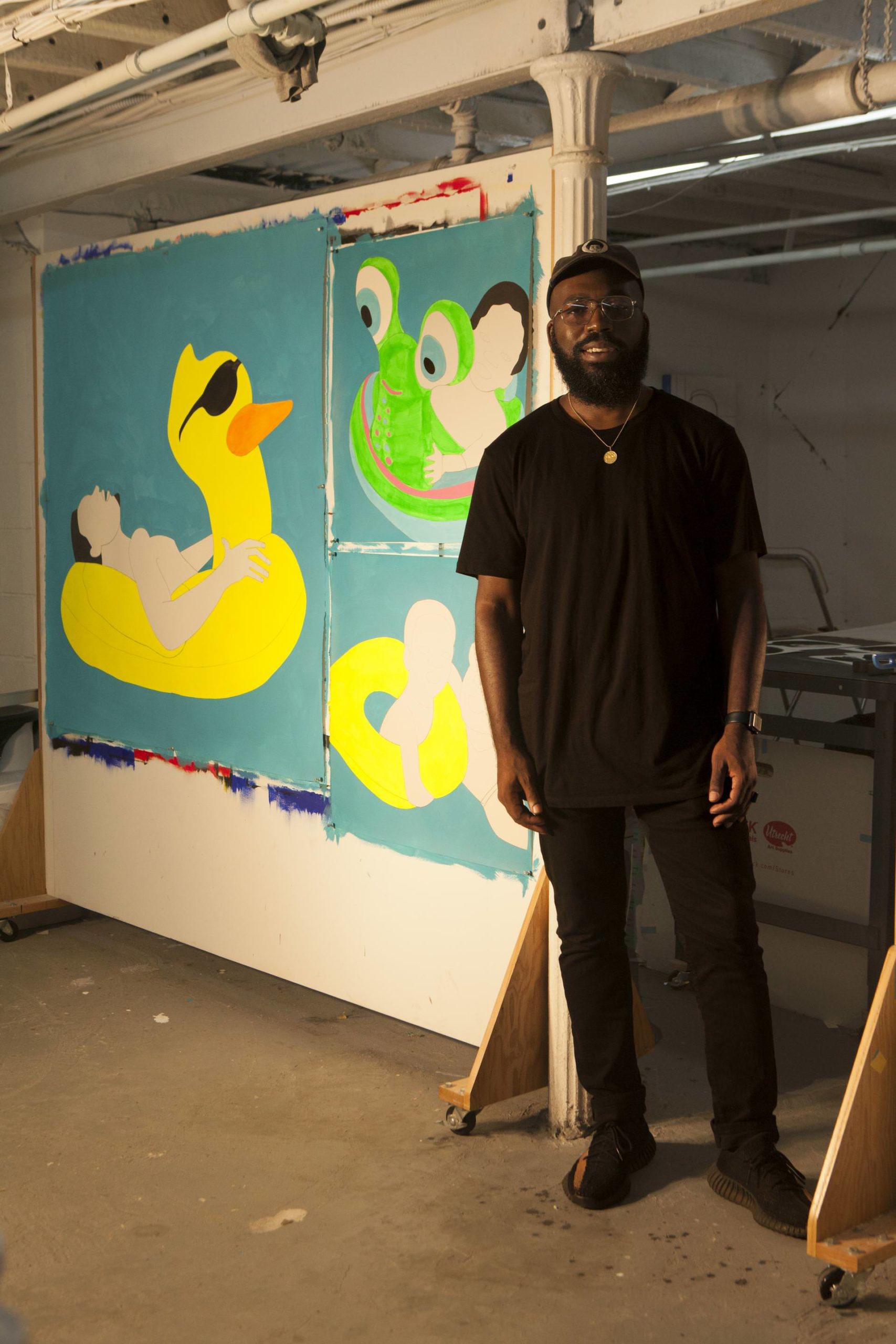
Portrait by Devin N. Morris.
On January 25, “Derrick Adams: Sanctuary” opens at the Museum of Art and Design in New York, featuring a large-scale installation inspired by The Negro Motorist Green Book, a guide for black American motorists published by Victor Hugo Green from 1936 to 1966. A mailman living in Harlem, Green created something like a Yellow Pages to help black Americans travel safely, listing hotels, restaurants, and places of business that were welcoming.
In his studio, Adams sat down with us to talk about making work from his imagination focused on a positive vision for the future.
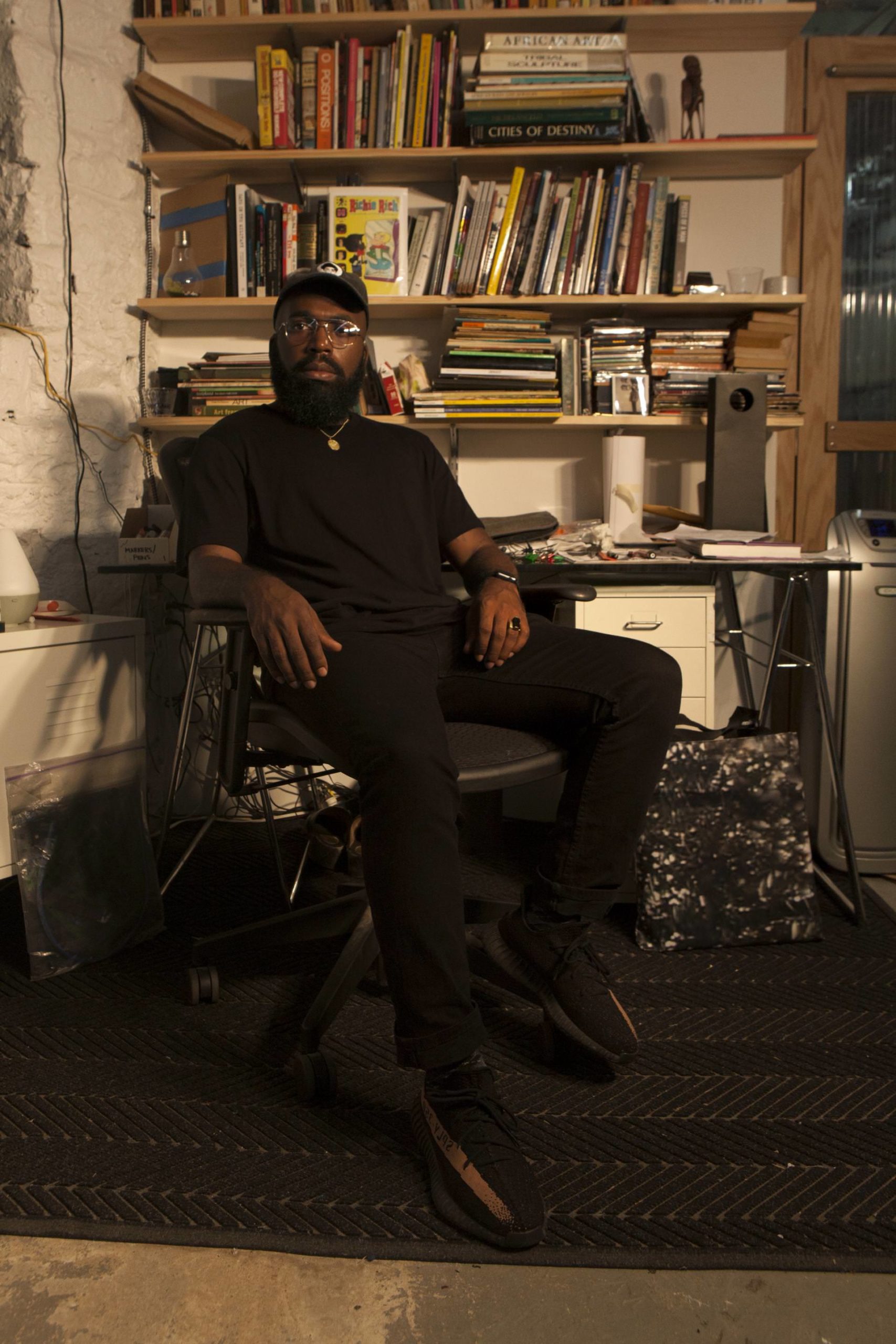
Portrait by Devin N. Morris.
WHITEWALL: What was the starting point for “Future People” at Stony Island Arts Bank? Did you work from their archives, like the Johnson Publishing Library?
DERRICK ADAMS: Theaster [Gates] asked me to do a project there. I started thinking about how the space itself was like a contemporary version of a time capsule. It was for a future generation to know what existed before digital. I wanted to explore the idea of innovation and technology from an analogue perspective. I found images in the archives that represented innovation and invention, pre–tech era people thinking about the future. I went through all the Johnson publications, searching for images that reflected African American aspiration at the time.
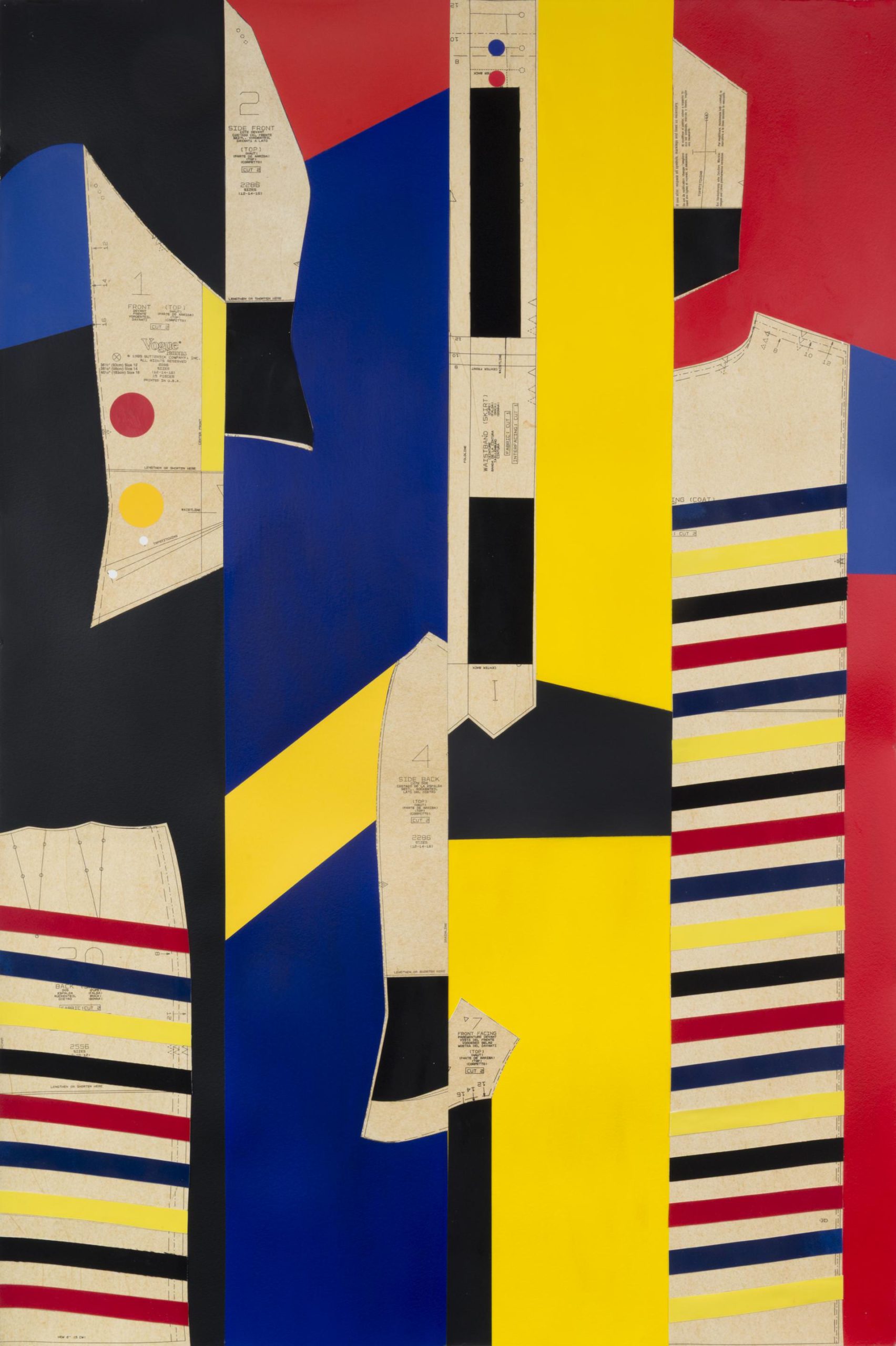
Derrick Adams
Runway No. 1
2017
60 x 40 inches
Mixed media collage on paper
Courtesy of the artist
I wanted it to look sci-fi, but low-tech. I wanted it to look makeshift. I like materials with a physical appearance. I don’t like the mystery of how things are put together. What I like about arts and crafts is you can see how the material is joined together, but it doesn’t take away from the experience of the fantasy. A kid takes a cardboard box and makes a car; it’s still a car. It shows the imagination of the person. That speaks more to the way I like to make work and the ideas I want to put out. Imagination is in everyone, and if you can envision things and not worry about high production, you can do more and affect people in a way that’s equally relevant and impactful.
WW: You also worked with archival material for the “Moodboard” series you created around the late fashion designer Patrick Kelly with The Studio Museum in Harlem and the Schomburg Center’s archive.
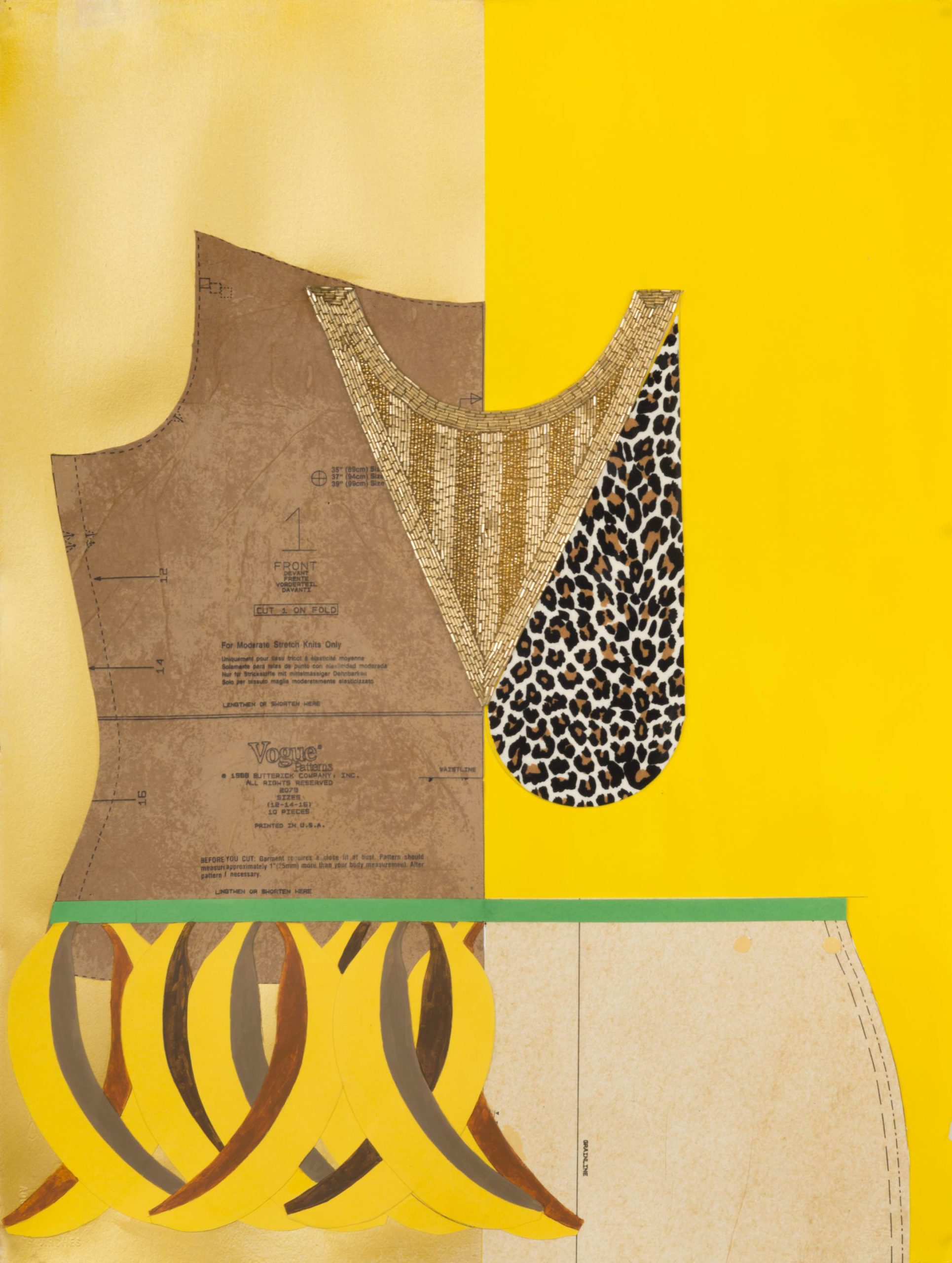
Derrick Adams
Queen of Everything
2017
30 x 22.5 inches
Mixed media collage on paper
Courtesy of the artist
DA: I spent, like, the past couple years doing a lot of archive work. As a practicing artist I’m prolific making stuff, but I’ve become more interested in slowing down the process of my productivity through research. I became interested in having conversations in line with what I like to do in my work, showing African American culture, black culture, from an American perspective. Certain aspects of a perspective of black America are not highlighted—success and normalcy, the triumphant things that happen within the culture.
These [“Floater” paintings] are based on images friends send me of their family. I’m thinking about what I want the future generation to see growing up. I don’t want them to see images of things being done to them. I want them to see images that make them feel good, that make them feel empowered.
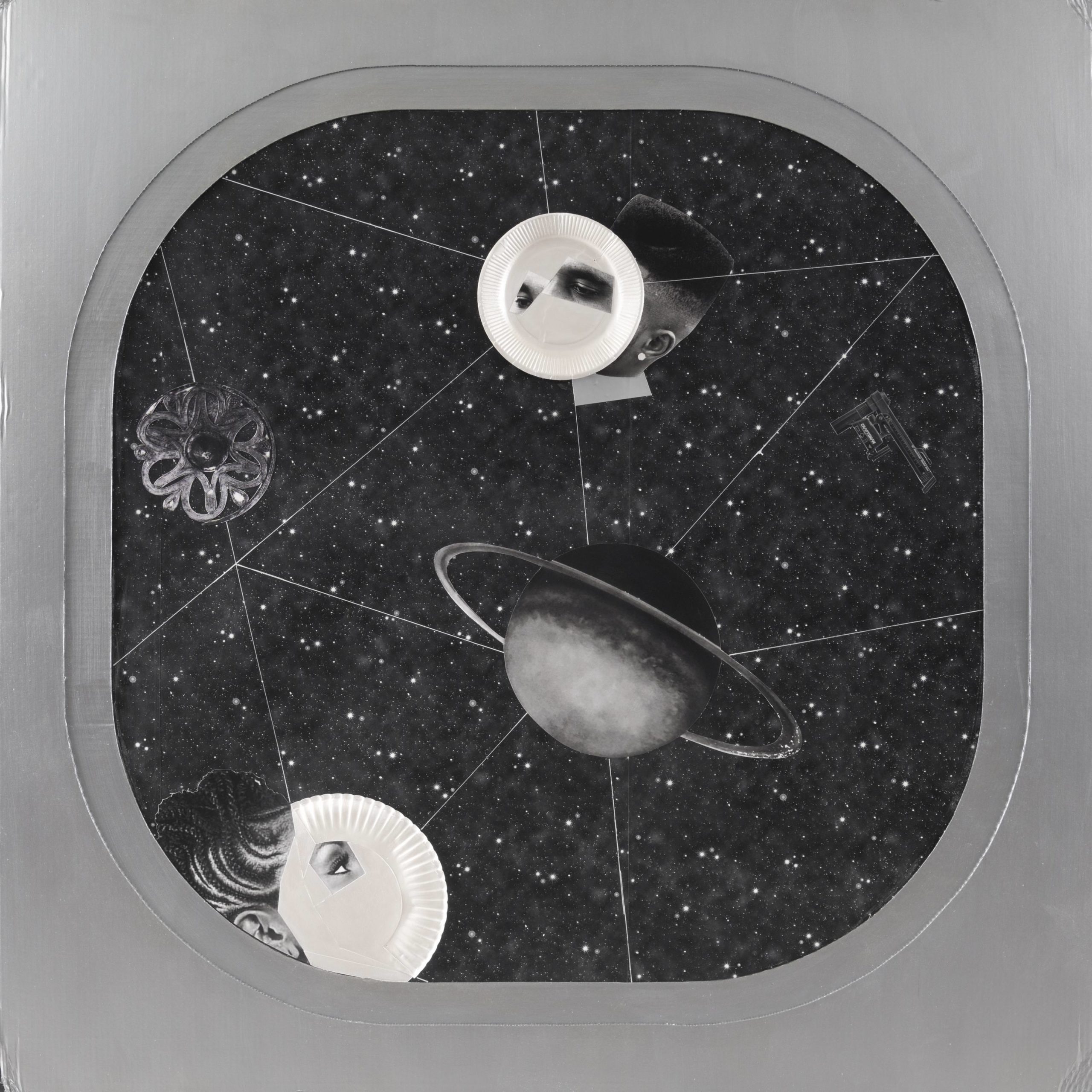
Derrick Adams
“Orbiting Us” #8
2017
Mixed media collage on paper
48 x 48 inches
Courtesy of the artist
What I talk about is rare. The fact that we had this successful black guy as president has infuriated people. I think promoting success is as revolutionary a tactic as talking about oppression in some ways. People already think we’re upset and that we feel slighted, victimized. But when they see a triumphant thing happen, that’s what creates this idea of hope and possibility and frustration for people who are against that.
WW: When your friends sent you pictures of their family in the pool, why did you want to paint that into what’s now your “Floater” series?
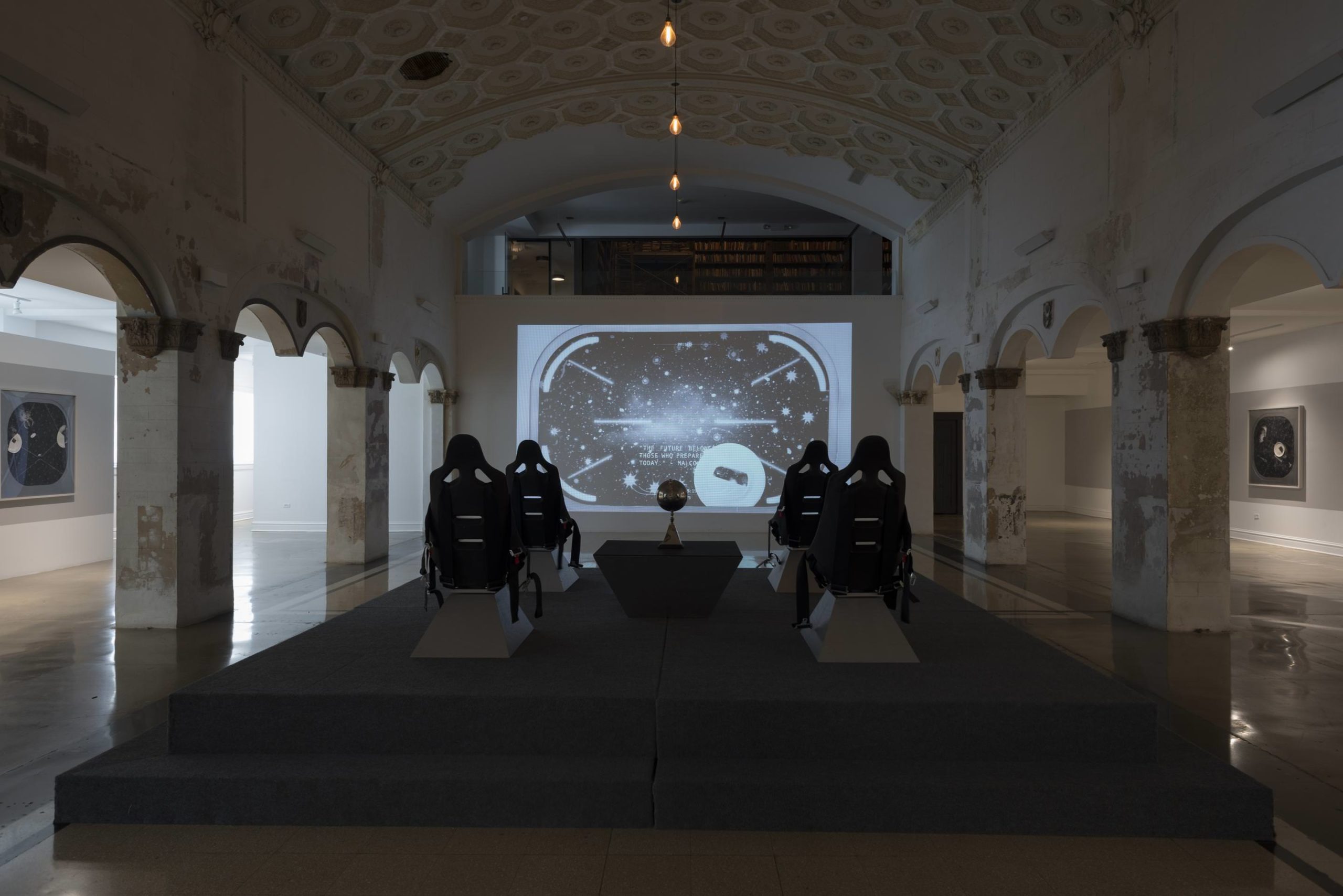
Installation view of “Future People” at the Stony Island Arts Bank in Chicago (2017).
DA: This is what I see when I go to my friends’ houses. This whole body of work came out of looking at images of Malcolm X and Martin Luther King, Jr. on vacation—pictures of him in a pool with his family. Why aren’t these images promoted? It’s rare that you see images of Civil Rights leaders, or people subject to opposition, presented in a way of leisure and relaxation. If you are a revolutionary, you have to regenerate your energy. There is nothing wrong with that. Leisure and relaxation is a reflective component of humanity. I wanted to tap into that more.
I remember in undergrad one of the professors said to me that being an artist is like being an illusionist. You have the ability to make people see things the way you want them to see things. You’re like a magician. I took from that conversation a certain level of empowerment and positon as an artist. You can make work about things you don’t like or you can make work about the way you want people to see the future by putting what you want out there and using your imagination.
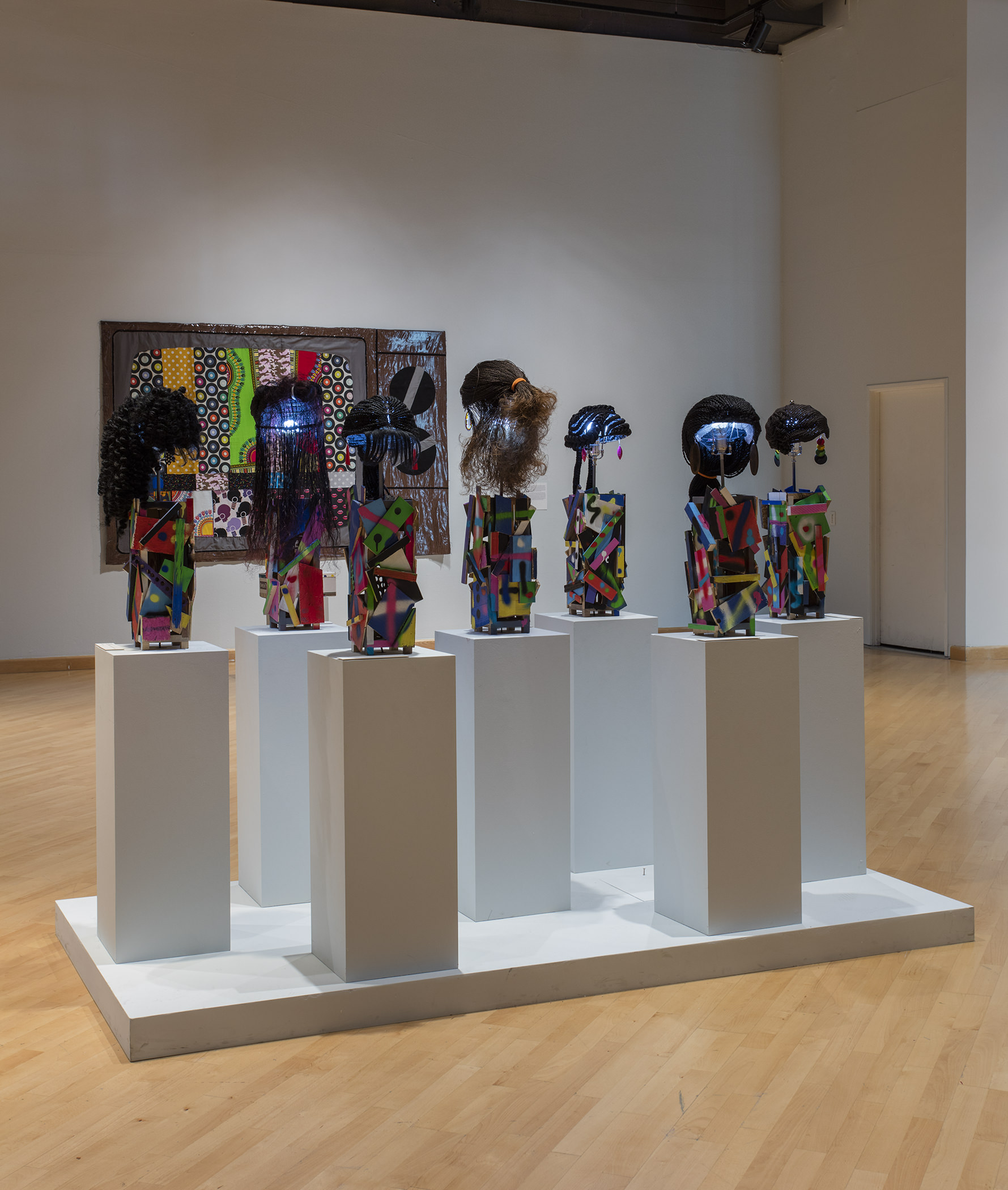
Installation view of “NETWORK” at California African American Museum (2017).
WW: What do you want people to see?
DA: That you can make what you really want to make. Just make what you want to make. What do you want people to see? Do you want to make a monument to someone you have disagreements with, whose beliefs you think are flawed? Or do you want to create a world where people can build from a positive foundation?
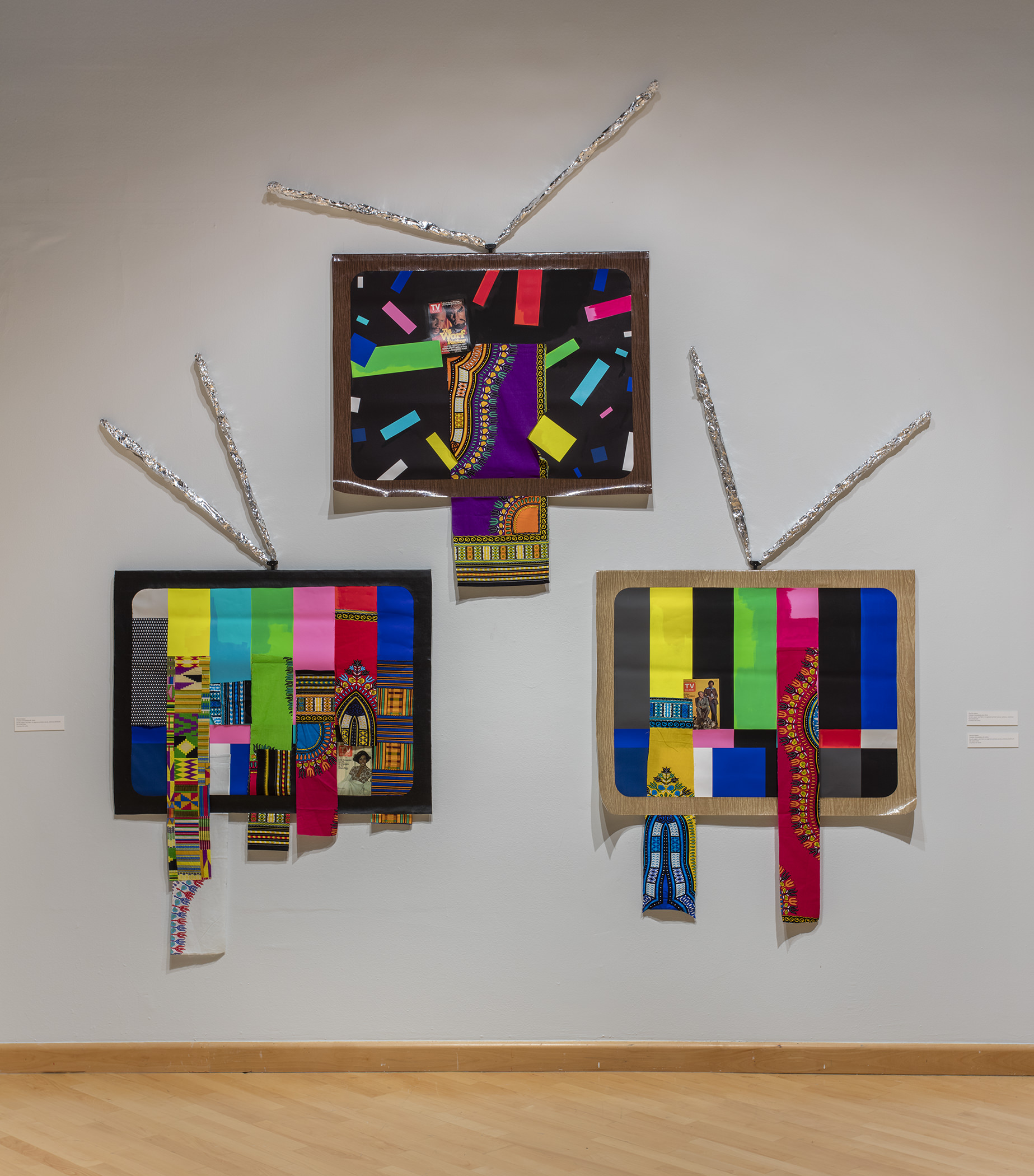
Installation view of “NETWORK” at California African American Museum (2017).


